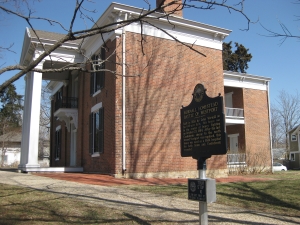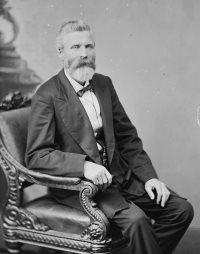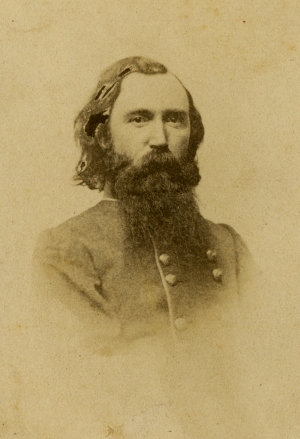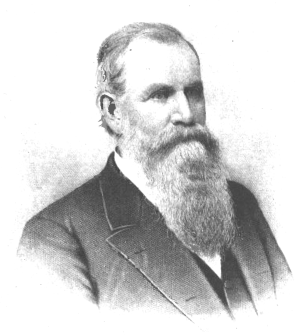From previous marker continue south on Pennsylvania, left turn on 61st St. Terrace to Wornall Rd. The Wornall Homestead is located at the intersection of Wornall Road and 61st Terrace.
Wornall Homestead Historical Marker

Wornall Homestead Historical Marker Inscription
"Built in 1858 by John Wornall on his 640 acre farm, this house was in the center of heavy fighting on October 23, 1864. After the last Confederate charge to the north toward Westport was repulsed, this house was used as a field hospital for both the Union and Confederate wounded."
Built in 1858, the John Wornall House originally sat on the Missouri frontier, the center of a 500-acre farm. During the 1864 Battle of Westport, both Confederate and Union armies occupied the sturdy brick farmhouse and used it as an emergency field hospital. The John Wornall House Museum had been restored by the Jackson County Historical Society and is open to the public for tours.
You are now standing where heavy fighting was occurring early in the afternoon on October 23, 1864. After outflanking and pushing the Confederates back from their early morning position, the Federals had succeeded in moving their line forward to a position occupying the lane (now 55th Street) just south of the Bent House. Brig. Gen. Jo Shelby's two brigades and Col. Archibald S. Dobbins' Brigade from Maj. Gen. James F. Fagan's Division had to fall back to a row of stone walls just north of the Wornall House. About this time, Shelby learned that Maj. Gen. John S. Marmaduke had been unable to hold Maj. Gen. Alfred Pleasonton at Byram's Ford. The entire right flank of the Confederate army was now exposed. Fagan with Col. William F. Slemons' and Col. Thomas H. McCray's Brigades had to move east towards the Harrisonville Road to meet a potential threat from Pleasonton's Division crossing at Byram's Ford.
Meanwhile, Maj. Gen. Samuel R. Curtis heard the sounds of battle to the Confederate rear and ordered the Army of the Border to charge forward. Col. Charles R. Jennison formed his 1st Brigade across Wornall's Lane and charged forward only to by met by Thompson's Iron Brigade. The fighting was fierce, but the Iron Brigade broke. The Federals were attacking from the north and the east. One of Pleasonton's batteries was now firing into the rebel flank from Hinkle's Grove. Now the Iron Brigade fled to the rear. They came to a long line of east-west stone fences where they turned to face the Federal attackers.
John Wornall was not present during the Battle of Westport, but his wife, Eliza, and nine-year-old son, Frank, remained in the house throughout the battle. Frank C. Wornall, remembered what happened that day.
Father had gone to Westport to escape probable death at the hands of the Federals, for he had been ordered out of the county by Ewing’s Order No. 11. Mother and I were alone all day in the house. We stayed in the cellar while the battle raged around us. Every once in a while a cannon ball would strike in our yard with a thud that shook the house. North of the house was the grove of locust trees that still stands. I could hear the cannon balls cut through those trees with a loud swishing noise, severing limbs and tearing trunks of trees.
When the battle was nearing its close the Confederates took our house for a hospital and the floors were covered with them. While the surgeons worked, mother boiled water to wash the wounds and helped with the bandages. I remember one man who was terribly wounded in the face. Our house was so full he could not come in and he sat on the curb of the cistern and I drew water to wash his wound. Then he got up and walked away. Later in the day the wounded were taken away to Kansas City.
John B. Wornall
William F. Slemons

Archibald F. Dobbins

